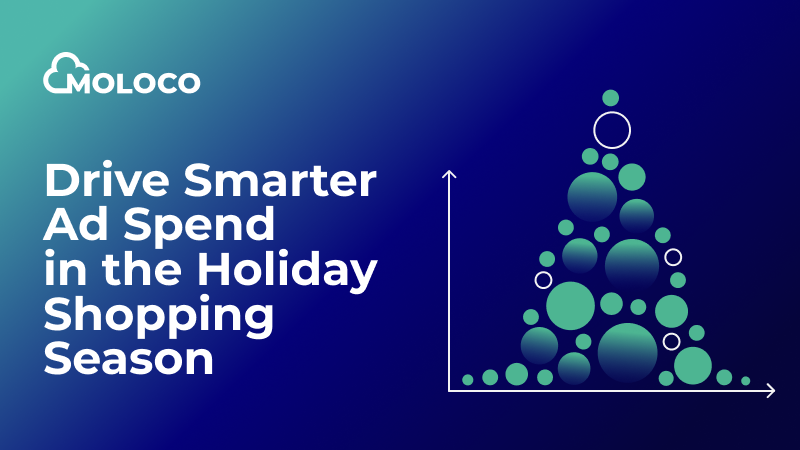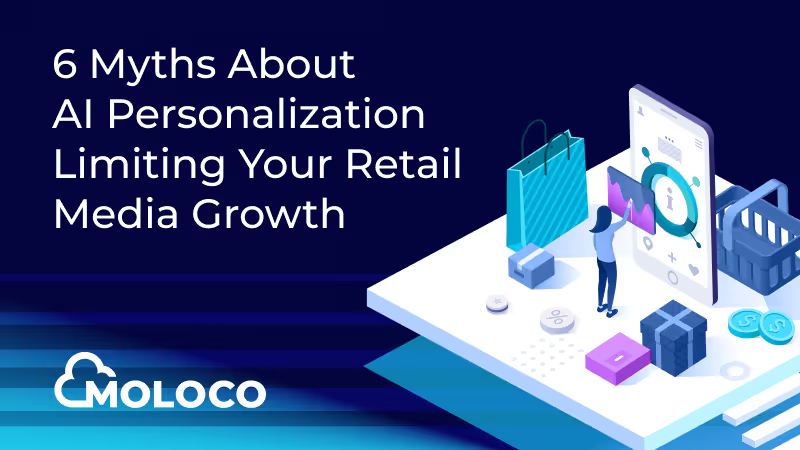Blog Article
How do Amazon and Walmart earn billions in advertising revenue each year? These e-commerce marketplace players understand that enabling their merchants to reach and influence consumers at the point of purchase is a win-win for every stakeholder in the ecosystem. The marketplace increases sales and stickiness, merchants grow their basket size, and shoppers find more relevant items faster.
But Amazon and Walmart aren’t the only platforms that built successful ad businesses through targeted campaigns for their advertising merchants. When done right, retail media can enable any marketplace to improve both conversions and shopping experience.
There are two main pitfalls to keyword campaigns. First, shopper preferences and behaviors are constantly changing, making it almost impossible for advertisers to keep up by manually researching and maintaining relevant keywords — constantly and without error.
Second, because keywords take advertising expertise and deep audience knowledge, they present a high barrier to entry for the majority of merchants who are novice advertisers or completely new to advertising. These merchants can’t set up or maintain manual campaigns, leaving massive ad dollars untapped.
The primary purpose of Chief Revenue Officers is, well, to drive new revenue. When it comes to retail media, many CROs are convinced that keyword bidding engines would allow them to replicate the success of Amazon and Walmart. But as James Arredondo, Moloco’s Senior Director of Business Development, shared in SpiceWorks, more and more marketplaces are looking to machine learning (ML) to automate targeting and ad buying for their merchants, driving merchant activation, higher accuracy, and purchases.
ML unlocks ad spend from merchants of any size by automating the hardest parts of ad campaigns: targeting and bidding. Combined with performance optimization, this capability means that any merchant can be a successful advertiser — without experience or having to hire a whole team.
Beyond automation, ML enables advertisers to make the most out of their budget. Rather than serving ads for complementary products that shoppers may have already planned to add to their carts, ML surfaces items based on the likely occasion. For example, a shopper who adds party-size pizza sauce and pizza toppings to his cart will most likely also buy pizza dough. In this case, machine learning deduces that he might be planning a party at home. Thus, advertising, say, a Catan game, would be more effective in growing his basket size rather than pizza dough that he’s already buying. Shoppers need exposure to items they didn’t realize they wanted.
As we can see, ML detects signals in real-time shopping journeys — for every shopper at scale. And as every CRO knows, product discovery is one of the crucial ways to keep shoppers coming back.
With their massive pools of shopper data, Amazon and Walmart are go-to platforms for merchants everywhere. But more importantly, these platforms provide technology that makes it easy for merchants to run and optimize their campaigns.
These capabilities aren’t exclusive to Amazon and Walmart. In fact, all marketplaces have their own unique advantage in their first-party data. With the right advertising technology and approach, any marketplace can activate their merchants, drive conversions, and turn their data into revenue.
Ready to launch your retail media business? Learn more at Moloco for Marketplaces.
 🚀 Moloco Commerce Media Helps eCommerce Capture the Holiday Traffic Surge 🎁
🚀 Moloco Commerce Media Helps eCommerce Capture the Holiday Traffic Surge 🎁The holiday shopping season brings a massive surge of high-intent traffic to e-commerce platforms. While this spike offers incredible opportunity, many advertising systems are too slow and static to capitalize fully on the fast-changing shopper behavior.

.avif) Beyond Last-Click: How We Prove Incremental ROAS in Retail Media
Beyond Last-Click: How We Prove Incremental ROAS in Retail MediaGhost bidding reveals true retail media ROI. See how AI-native incrementality testing delivers proven results from 253% to 1,609% incremental ROAS.

 6 Myths About AI Personalization Limiting Your Retail Media Growth
6 Myths About AI Personalization Limiting Your Retail Media GrowthDiscover the truth behind 6 AI personalization myths that are holding back your retail media growth - and how to maximize your performance.

.avif) The Commerce Media Ecosystem: Where Data, AI, and Ecommerce Shopping Converge
The Commerce Media Ecosystem: Where Data, AI, and Ecommerce Shopping ConvergeEverything you want to know about the Commerce Media Ecosystem. Learn how first-party data and AI is used to drive growth for suppliers, digital retailers, and consumers.

